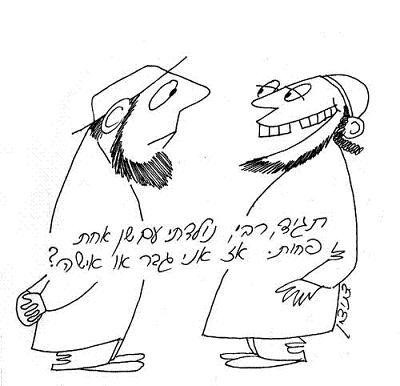
According to the early sages (the Tanaaim) a man has 248 limbs (Mishnah, Tractate Oholot 1:8). They ruled that if a person died and the majority of his limbs remain, they still convey the ritual impurity of the dead, and they even noted the number of limbs which constitute a majority of 248: 125 limbs. One sage, Ravina, asked why the early sages had to note the number which constitutes the majority of limbs; can’t we make the calculation on our own? Answer: Because the early sages noted the number which constitutes the majority of limbs we learn that 125 limbs is what determines, even if the dead person was born with a greater number of limbs, such as having been born with an extra finger or toe, or if he was born with a smaller number of limbs, such as having been born with only four fingers or toes. The scholars continued to discuss the topic of the number of limbs and related that the students of R’ Ishmael wanted to check the number of a person’s limbs. They took a whore who had been sentenced to death, boiled her so that the flesh came off the bones, and counted the limbs; they found she had 252. They told their teacher about the finding, which contradicted the sages’ ruling that there are only 248 limbs. R’ Ishmael responded that a man has 248 limbs, as the sages ruled; a woman has 252 limbs — four more than a man — and this can be deduced from the Scriptures. It is written:
“Phinehas’ wife…bowed herself and gave birth, for her labor pangs [tzirehah] came upon her” (I Samuel 4:19). The Scriptures added two hinges [tzirim] to a woman. It is also written “Because it did not shut up the doors of my [mother’s] womb” (Job 3:10), adding two doors for a total of four extra limbs to a woman. R’ Akiva added that a woman has an extra limb, for it is written, “When the Lord saw that Leah was unloved, He opened her womb” (Genesis 29:31); the Scriptures added a key to the woman’s body. The scholar asked: According to R’ Akiva’s opinion, a woman has 253 limbs and the experiment conducted by the students of R’ Ishmael only showed 252. Answer: It is possible that the extra limb is very small and dissolved in the boiling so the students didn’t identify it. The scholars went on to ask: If so, if from the word tzirehah we learn that a woman has extra limbs, what of the man of whom it is written “Pangs have taken hold of me, like the pangs of a woman in labor” (Isaiah 21:3), implying that a man, too, has two additional hinges. Answer: These are hinges of flesh, without bones. The scholars then asked: Another verse states “Because of the vision my pangs have overwhelmed me” (Daniel 10:16), implying that the man has two additional limbs. Answer: These are hinges of flesh, with no bones. The scholars then supported their argument that the Scriptures refer to the additional male limbs as flesh with no bones, for if we do not make that claim, the ruling by the early sages, that a man has 248 limbs, will prove erroneous.
(Babylonian Talmud, Tractate Bechorot 45a)
